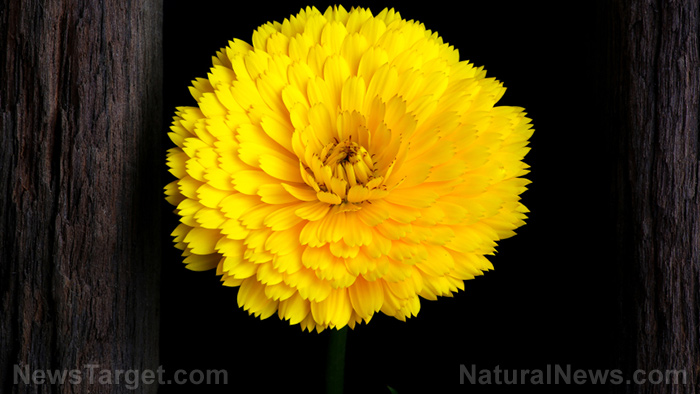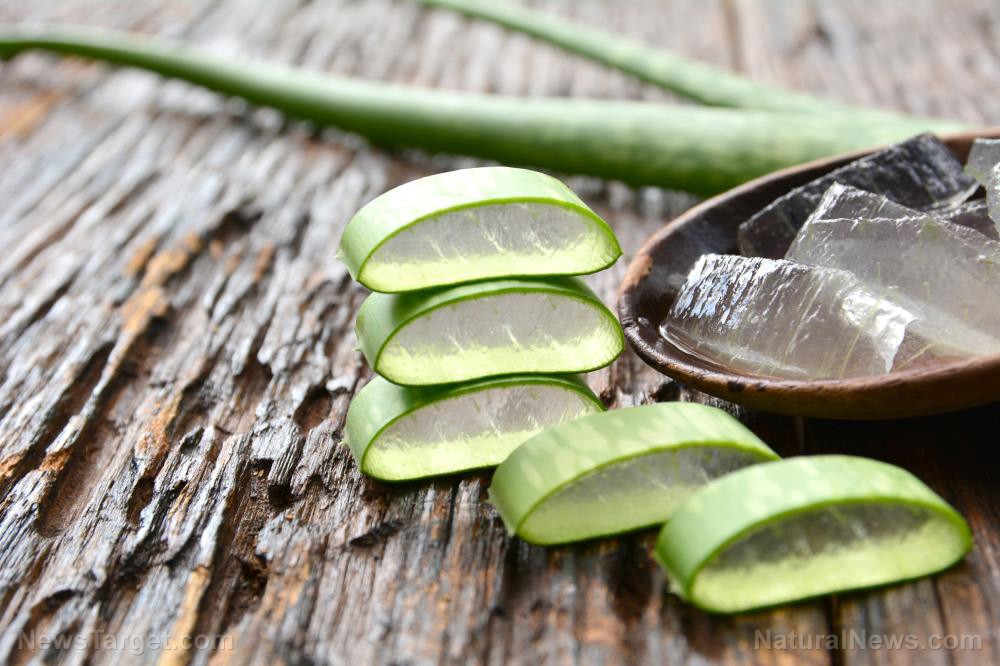Homesteading basics: How to grow calendula, a useful medicinal plant
05/05/2019 / By Zoey Sky

Preppers know that certain flowering plants deserve space in their home gardens, especially those with medicinal uses like calendula (Calendula officinalis). The flowering herb has brightly-colored yellow blooms that can be used to treat a sore throat or reduce fever. (h/t to TheHomesteadingHippy.com)
Calendula plants, which are also called English marigolds or pot marigolds, can repel various garden pests. They also bear flowers that can brighten any garden from early summer until the first frost.
Preferred growing conditions
Calendulas are easy to grow, and they can thrive even with very little care. These herbs must be planted in full sun or partial shade. They can grow in zones 2 through 10.
Calendulas prefer average, well-draining soil and only require occasional watering. They are also adaptable, but they prefer cooler temperatures.
Calendula flowers will last longer in lightly shaded areas.
Soil preparation
Calendula plants need rich soil or potting soil to develop. Ideally, calendulas should be planted in a prepared garden bed or a large container full of nutrient-dense potting soil. Alternatively, you can work aged manure or compost into the ground to improve the conditions of your soil at least a month before you’re ready to plant.
Calendulas don’t require special soil, but they will thrive under full sun. Ensure that the space you will plant your calendulas in receives direct sunlight for most of the day and is not prone to becoming waterlogged when it rains.
Calendulas prefer soil with an average pH of 5.5 to 7, but they grow best in soil with a neutral pH. If you are unsure of your soil’s pH, conduct a basic soil test.
If your soil is too acidic, add materials like wood ash. When adjusting soil pH, add materials to the soil ahead of planting to give them plenty of time to settle.
Starting calendula seeds
Calendula plants are easiest to grow from direct sowing, but you can also start them indoors if you’re dealing with inconsistent weather. To start calendula indoors, seed them at least eight weeks before the last anticipated frost date. Plant the seeds in flats for easier transplanting. Calendula seeds should germinate within five to fifteen days.
If you’re starting calendula seeds directly in the ground, plant them in early spring. The seeds can be planted as early as February if you live near the coast.
Steps:
- Plant seeds at least ¼-inch to ½-inch deep. You can sow seeds about four to six inches apart and cover them with an additional ¼ inch of garden soil.
- Water the seedbed immediately after planting the seeds to boost moisture levels.
- Keep the bed moist for the next week or so after planting, and don’t let it dry out.
- Be careful not to wash the seeds away when you water. For an even, gentle flow, use a sprayer nozzle with sprinkler adjustments instead of a full-strength garden hose.
Caring for calendulas
Calendulas can grow to at least 24 inches in height, so give them plenty of space when seeding or transplanting. The plants take about sixty days or less to mature from seed to flower.
Deadhead plants by pinching off spent flowers to help extend the blooming period. Fertilize occasionally with an organic liquid bloom fertilizer several times during the growing season to increase their blooms.
Water the plants thoroughly at least twice a week or more often during dry conditions. Water the roots of the plant directly, and make sure to provide about an inch of moisture per week.
Consistently mulch your calendula to prevent weeds and to allow the plants to retain moisture. In the heat of summer, mulch will help calendula roots stay cool.
Calendulas repel pests, but they can attract slugs. Treat these by manually removing them or use a home remedy like a shallow dish of beer.
Add some compost in midsummer to replace any nutrients that your calendulas depleted from the soil. Compost is a great fertilizer because it’s a balanced source of nutrients that won’t burn developing plants.
If you’re planting calendulas in your garden to keep pests away from your other crops, grow them next to vegetables like carrots, chard, and tomatoes for insect protection. Calendulas can also repel harmful nematodes in the soil.
The medicinal uses of calendula
Consult your health care provider before using calendula as a home remedy to find out if it will interact with other medications that you are currently taking.
While calendula is safe for most people to use, avoid the plant if you are pregnant or if you have a preexisting allergy to ragweed and similar plants. Calendula may cause drowsiness, so refrain from using it together with another drug that might make you overly sleepy. Don’t use it as well if you are about to undergo surgery.
Since the plant has powerful anti-inflammatory and antibacterial properties, calendula is often used in balms, lotions, or salves that can be applied directly to the skin. Calendula remedies have soothing and restorative properties. (Related: Make your own calendula extract: Step by step instructions for this multipurpose medicine.)
The medicinal uses of calendula include:
- Boosting the immune system
- Inducing a menstrual period
- Reducing fever
- Reducing pain and swelling of wounds like leg ulcers and peeling lips
- Relieving stomach pain
- Stimulating blood circulation and promoting sweating
- Treating and preventing conditions like muscle spasms, sore throat, and even certain types of cancer
Plant calendulas in your home garden so you can have access to a useful medicinal plant even in a post-SHTF world. Read SurvivalMedicine.news for more stories on survival medicine.
Sources include:
Tagged Under: botanicals, Calendula, Calendula officinalis, English marigolds, gardening, gardening tips, herbal medicine, Herbs, home gardening, home remedies, homesteading, ingredients, marigold, medicinal plants, natural cures, off grid, pot marigold, prepping, prevention, remedies, self sufficiency, self-reliance, self-sustainability, survival, urban gardening



















